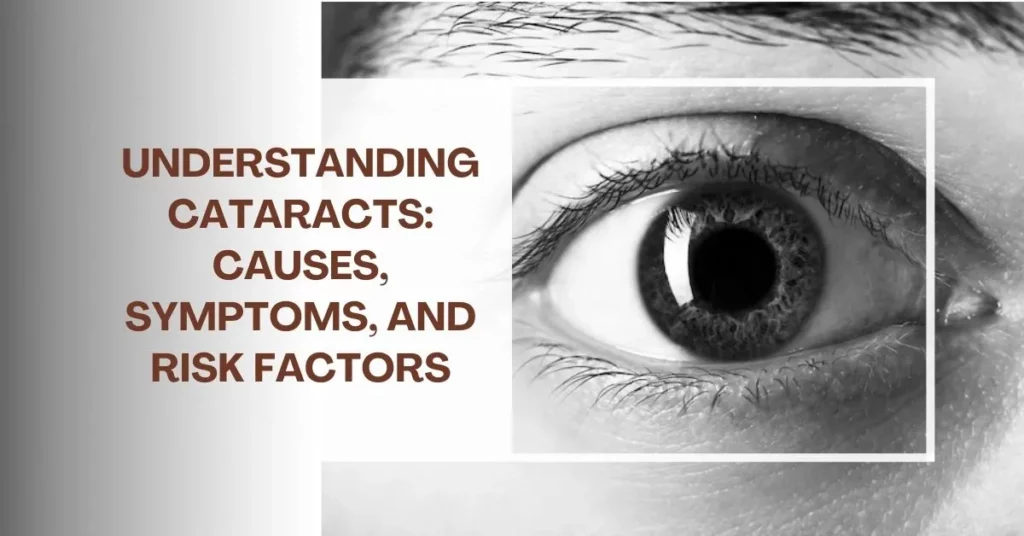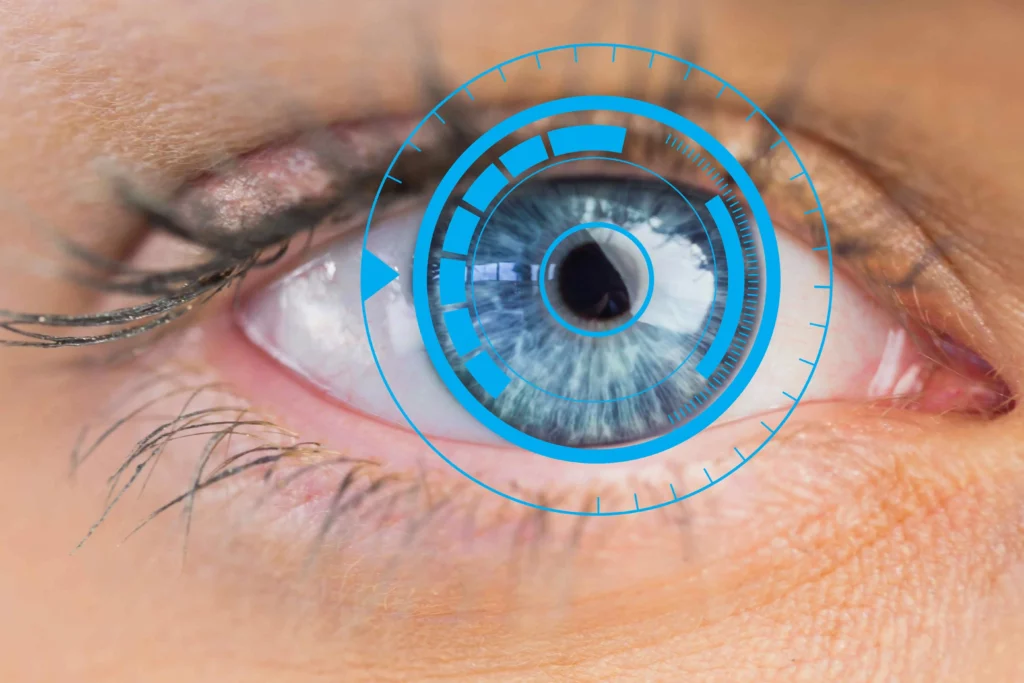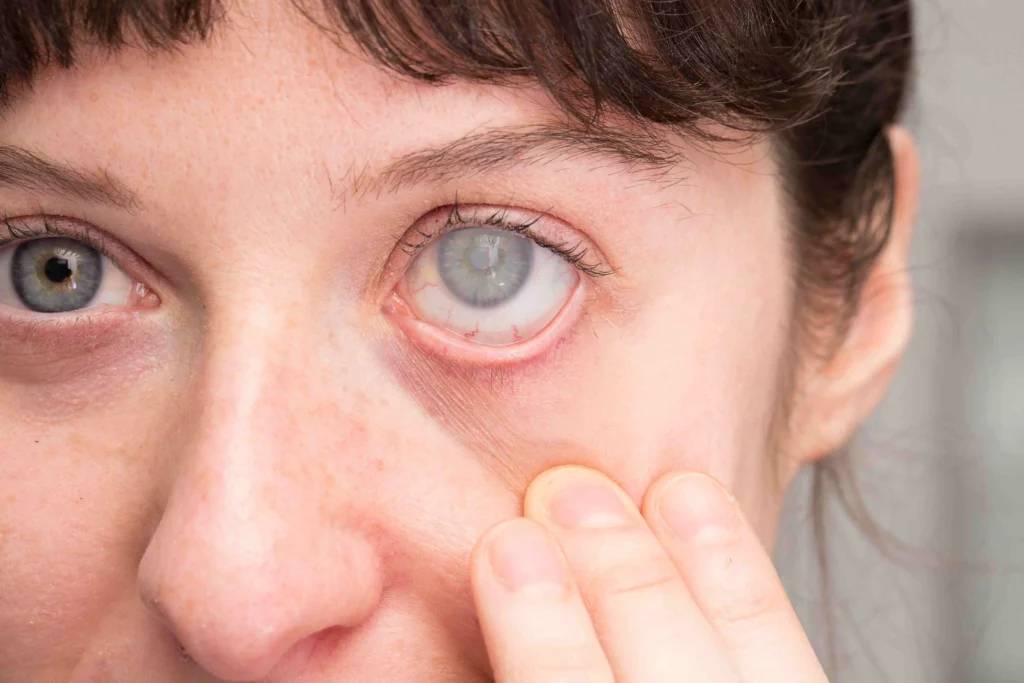Understanding Cataracts: Causes, Symptoms, and Risk Factors

What is the definition of cataract?
A cataract is a susceptible medical condition in which the eye’s lens becomes increasingly non-transparent, resulting in blurred vision. The lens of the eye, which is behind the iris and the pupil, becomes opaque when a cataract occurs. Cataracts are a common problem in the elderly but can also affect younger individuals. Age is the most recurrent aspect behind cataract occurrence. The lens of the eye is made up of protein and water, and as we age, the proteins in the lens start to break down and clump together. The breaking up of protein leads to the lens clouding, which is characteristic of cataracts. This overcasting of the lens can cause blurry vision, decreased colour sensitivity, and strain in seeing in dim light conditions.
Based on the structure of the human lens, cataracts can be classified into nuclear sclerotic Cortical and Posterior Subcapsular cataracts. Another type of categorisation includes age-related cataract, radiation cataract, traumatic cataract, paediatric cataract, and secondary cataract. Some other related health conditions are myotonic dystrophy, Wilson’s disease, congenital Rubella syndrome etc.

What are some symptoms of Nuclear Sclerotic Cataract?
A nuclear sclerotic cataract is a genre of cataract that evolves in the centre or core of the eye’s lens. The following are customary symptoms associated with nuclear sclerotic cataract: Making distance indistinct more than near vision (normally, but others may observe aggravating problem of reading more than distance), making it cumbersome to read, watch TV or perform other daily activities that require clear vision, Increasing myopia (“Second-sight” episodes of improved uncorrected distance vision in hyperopes and improved uncorrected near vision in emmetropes), indigent vision in dark backdrops such as night driving, the decline in contrast and dwindled capability to distinguish between colours, glare and monocular diplopia. Due to glare, The cataract can make colours appear less vibrant or faded, which can make it difficult to distinguish between different shades. Nuclear sclerotic cataracts can cause sensitivity to bright lights, such as headlights or sunlight,making it hard to see in bright environments. Nuclear sclerotic cataracts can cause double vision, which can make it difficult to perform tasks that require depth perception, such as driving.

What are some risk factors?
There are diverse risk factors that can increase the probability of developing cataracts. Some of the most common risk factors include:
Age: Cataracts are more likely to evolve as a person ages. The majority of people over the age of 60 have some degree of cataract formation.
Family history: Hereditary history of cataracts may increase the risk of developing them.
Genetics: Some people may be more prone to developing cataracts due to genetic factors
Diabetes: People with diabetes are more likely to develop cataracts at an earlier age.
Prolonged exposure to sunlight: Long-term exposure to ultraviolet (UV) rays from the sun may increase the risk of cataracts.
Smoking: Smoking cigarettes or other tobacco products can increase the risk of developing cataracts.
Obesity: Being overweight or obese may increase the risk of developing cataracts.
Spikes in blood pressure: People with high blood pressure may be more likely to develop cataracts.
Extended consumption of corticosteroids: Long-term use of corticosteroid medications may increase the risk of cataracts

A few other risk factors for cataract development include the following:
- Vulnerability when subjected to Ultraviolet radiation
- ophthalmic diseases: Retinitis Pigmentosa, Uveitis
- Ocular Injury resulting in trauma
- Previous ophthalmic operation
- Genetic susceptibility
- Radiation or chemotherapy
Conclusion:
In conclusion, cataracts are a common medical condition that affects the eyes. The condition can cause a variety of symptoms, including blurred vision, sensitivity to light, and difficulty seeing at night. While cataracts can be managed in the early stages with corrective lenses, surgery may be required in more advanced cases. If you suspect you may have cataracts, it is important to consult with an eye doctor for proper diagnosis and treatment. Cataract can be prevented if several risk factors can be avoided. You can opt for genuine and helpful consultation at Global Eye Hospital Narsingi, Global Eye Hospital Kukatpally for cataract operation in Hyderabad.
Book your appointment now for all eye-related services.
Your Vision Our Focus


